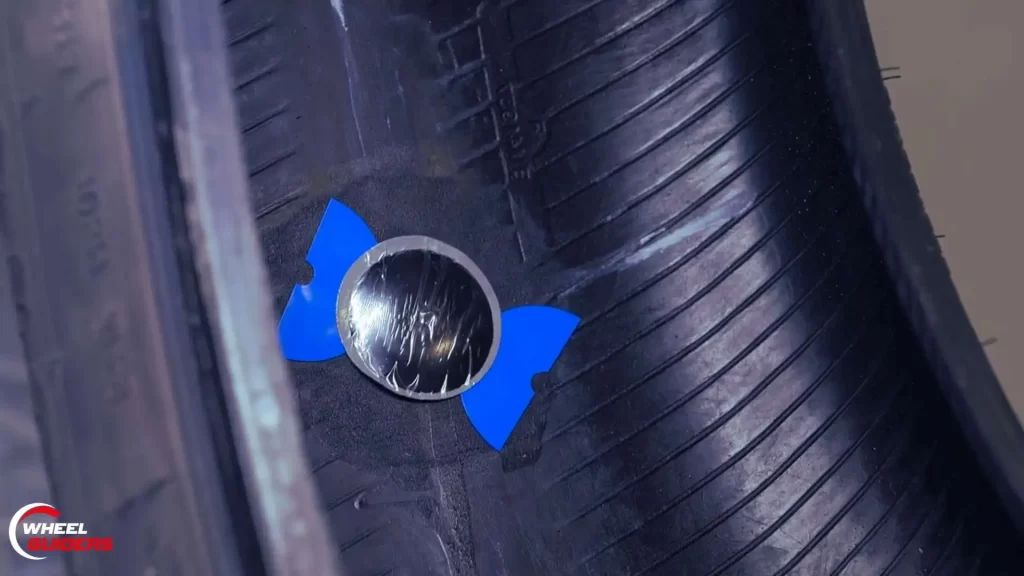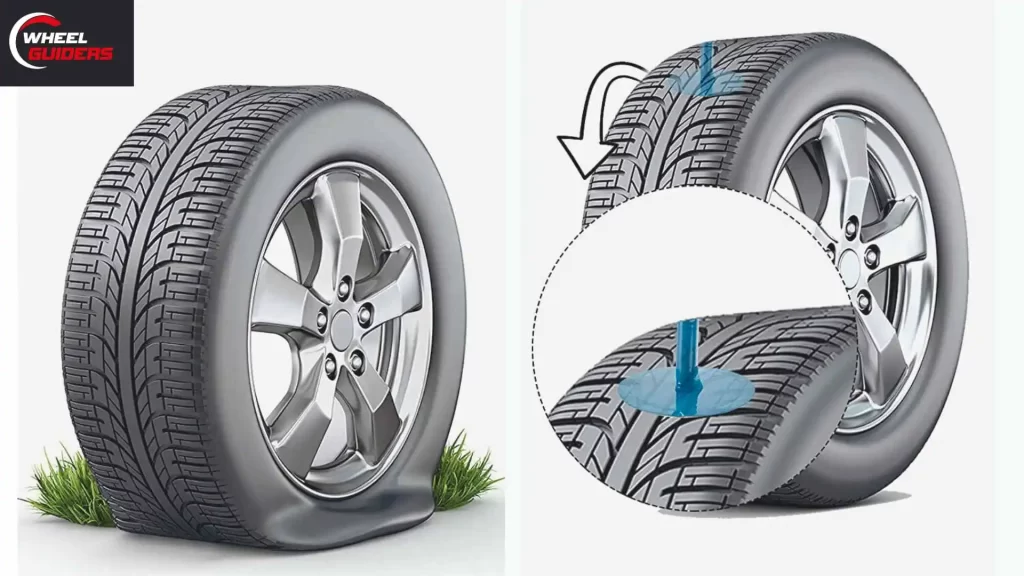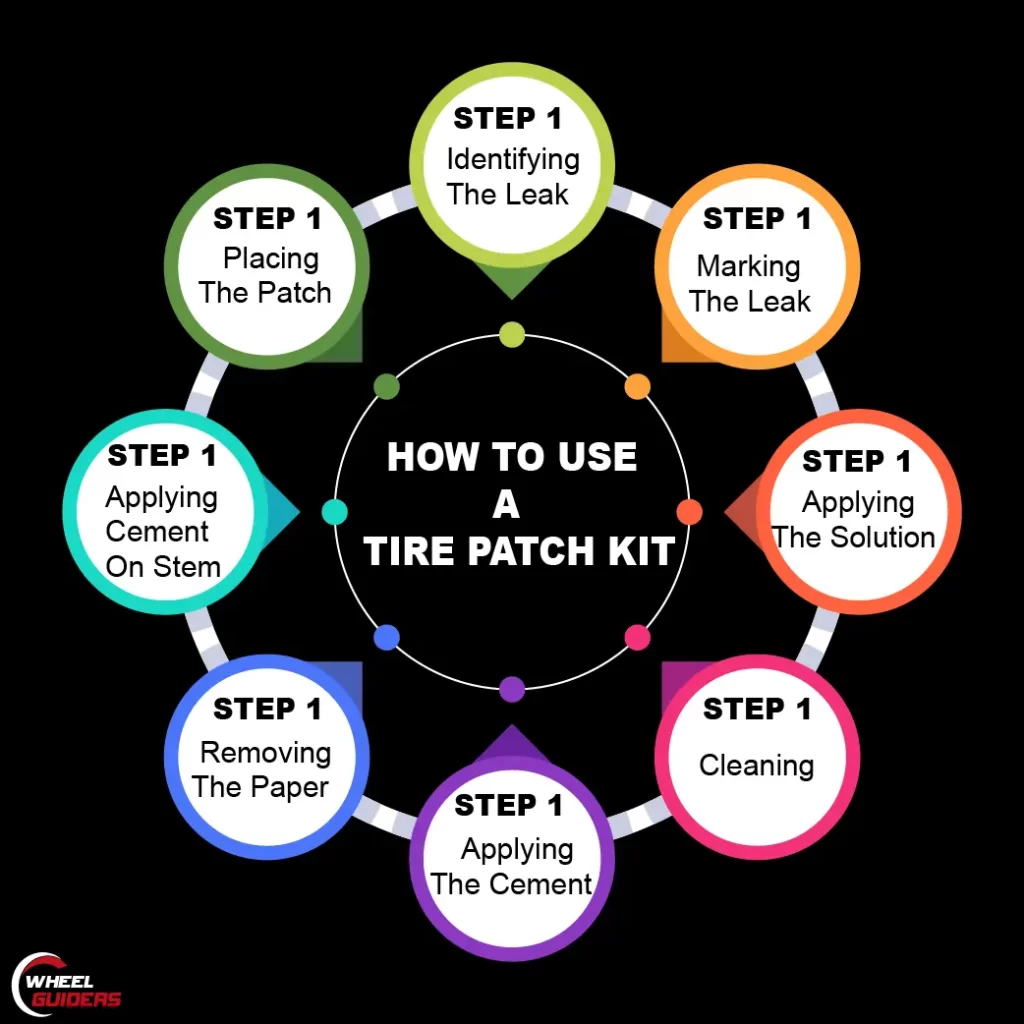How Long Does A Patched Tire Last? The Ultimate Guide
If you’re torn between replacing a tire or patching it, Then I have your back with my extremely helpful tire patching guide that not only saves you money but also empowers you to become self-sufficient and do it yourself
How long does a patched tire last? If the puncture is patched adequately, tire life will likely last for about 7 to 10 years or until its life ends. However, it’s important to regularly monitor your tires and inflate them to the recommended PSI.
If you are still wondering on how long does a patched tire last or what effects the durability of a patched tire. Then you are at the right place. In this article I have shared all the important points that one should know before patching their tires. Let’s dive in!
Should I Patch, Plug Or Replace My Tire? What Is Patches And Plugs Combo?
It is crucial to consider the puncture’s size and location before selecting whether to patch, plug, or replace a tire. However, changing the tire is the most appropriate action if the puncture hole is severe or on the sidewall. By understanding in detail about patching, plugging and their combination, it would become easier to analyse the condition of your flat tire emergency and make split second decisions.
Patches
Patches are tiny, malleable rubber pieces attached to the inner line of a tubeless tire with glue resembling rubber vulcanizing cement. A tire can be patched if the puncture is not more than 6mm and is located in the tire’s tread. Tire patching process costs $10 to $30 per tire, depending on the damage.

Patching is a more long-lasting and reliable solution for punctures than plugs, especially when the patch is of good quality and applied from the inside to create a strong seal over the hole.
Plugs
The price to plug a tire is around $15 to $20. The closer the tire is to the sidewall, the more dangerous it is to repair or plug the hole. The tires can only be plugged if the puncture is less than 6 mm in size and is located in the tire’s tread.
The most significant risk posed by a tire plug repair is that air and moisture will slowly infiltrate between the tire’s layers. It will cause the steel belts to rust and the tires to disintegrate. The bonds holding the piece of rubber to the tire rubber layers are weakened by this corrosion. It raises the possibility of tire treads separation.
Tires can be quickly plugged while on the go, as this method requires less time compared to using patches. Although plugs serve as temporary repairs, they are especially advantageous in emergency situations.
Pros
Cons
Patches and Plugs Combo
If the puncture size is more than 6 mm or is inadequately larger than what a proper plug or patch tires can hold, then this combination can be the right approach for strengthening the tire and making it more durable. With this combination, the tire not only retains its properties but also provides the safety and comfortability that is required.
This process involves connecting the patch and the plug with a rubber stem in between to make it stronger. The tire is patched from the inside, plugged from the outside, and fixed to create a durable rubber seal that does not escape high stress and strain.
A plug and patch is a safer alternative because it costs only $35 to $50.
Pros
Cons
Replace Tire
If your tire is damaged or has excessive wear on it, it is better to replace it instead of repairing it, as it can get prone to more punctures, damages and higher expenses. Replacing the tire once instead of repairing it multiple times can be a better option to save time, expense, and ensure the maximum safety.
Your vehicle’s tires offer the most traction and safety. For safety concerns, replacing tires is preferable if you frequently ride with your family or close friends. If you intend to keep your vehicle punctured for an extended period of time, not replacing the tires will only delay the inevitable. Tire replacement are some of the least expensive life insurance available.
How Long Is A Patched Tire Good For
A well-patched tire can be good for 7-10 years if it is patched and repaired adequately. The duration of the tire may differ depending on the tire’s age and the patch’s quality.
Adhering to a few stringent regulations of tire manufacturers can help elongate the tire’s life, making it highly reliable and comfortable. These include maintaining proper inflation, regular rotation and avoiding to overload the vehicle with more than its recommended weight limit.
Is It Safe To Drive With A Patched Tire?
Yes, driving on a patched tire is generally safe if these points are followed and kept in mind.
- Make sure the tire is patched from the inside.
- The sidewall and shoulder of the tire are not affected.
- Replace the tire immediately if it starts to lose air pressure or if there are any signs of bulging, cracking, or separation.
- Using high quality patches is important.
- Regularly check for wear and tear.
- The tire must be replaced if the puncture is broader than 16 inches and is in the sidewall, shoulder, or other critical areas of the tire.
If there is any uncertainty regarding the tire’s safety, it is always preferable to consult a tire technician to understand better about the tire puncture repair.
How Long Does Patching A Tire Take?
The size and location of the patch, the available tools, and the expertise of the patcher are a few variables that can affect the time taken to patch a tire.

How Long Does A Tire Patch Take To Dry?
Synthetic materials dry faster because they are more absorbent and less likely to retain moisture. The drying time may also vary depending on the size and shape of the patch. A thin patch repair method may dry faster than a bulky patch with many nooks and crannies.
It may take a patch at-least 5 to 20 minutes to dry thoroughly. Depending on the material, the thickness, the absorbency, and the environment, patch drying can vary significantly.
Factors such as humidity levels and temperature can also influence the drying time. Lower humidity and higher temperatures can typically speed up the process.
Who Can Patch A Tire?
Anyone can patch a tire with basic tire patching skills. Most auto supply stores have DIY tire patch kits containing all the equipment and supplies needed to repair a tiny to larger puncture in a tire. Letting the tire expert do this work is advisable if you aren’t comfortable choosing a patch.
A proper tire repair shop or auto service facility is the most convenient option if you cannot do it yourself. You can also contact companies that provide mobile tire repair job services to fix the patch at your location, saving you time and hassle. Additionally, reputable tire shops offer expert guidance for your tire maintenance needs.
Your particular requirements and circumstances will determine the correct action for repairing a tire patch. It’s always preferable to do it yourself on the first go.
How To Use A Tire patch kit

If these steps are followed properly one would never have question again on how long does a patched tire last. With this technique you patched tire will be highly durable and retain the same comfortability, just like before!
Step 1 – Identifying The Leak
Use a soap solution and apply it on the suspected area, which will create bubbles and highlight the exact location of the leak. You can also identify it by inspecting the tire visually for any sharp objects or listening for any hissing sound of air pressure leak from the tire.
Step 2 – Marking The Leak
Use chalk to mark the exact location with an X sign. Place the center of the “X” over the exact location. This will make it easy to patch the tire on the exact point.
Step 3 – Applying The Solution
Apply the rubber puffing solution on the area and scrap it properly with a scraper at a 90 degree angle.
Step 4 – Cleaning
Use the wire brush and cleaning solution (if required) to clean all the leftover components, making sure not to leave any contaminated patches.
Step 5 – Applying The Cement
Apply the valcanizing cement to the area and leave it untouched for 5 minutes.
Step 6 – Removing The Paper
Do not touch the back side of the patch, as it can contaminate the seal. Carefully pull the paper off by pinching the head a little bit on either side.
Step 7 – Applying Cement On Stem
Make sure that the area is partially dried and ready to intact. Now apply some volcanic cement on the stem, as it will help seal the hole better.
Step 8 – Placing the Patch
Place the patch on the hole properly from the inside while pulling it out from the other side with the help of a plier. Once the patch is properly fixed, cut off the extra stem. Now place the tire back on the rim, and you’re good to go.
Conclusion – How long does a patched tire last
As I conclude, I hope you have received your answer to the question, “How long does a patched tire last?” Although the procedure, as previously mentioned, usually takes 30 minutes.
Patching has been designed to help drivers save the cost of replacing the tire and encourage the drivers not to worry while travelling while also giving them the extra confidence they need.
These few tips and tricks that I have mentioned, along with the steps on how to patch a tire by yourself, can be very useful and helpful. Furthermore, I highly recommend always keeping a spare tire on hand to promptly address any unforeseen emergencies that may arise.
It will enable every driver to have the ability to take split second decisions without relying on anyone and patch their tires then and there. Patching tires can be highly reliable, and if patched in the right way, it can drastically increase the life of a damaged tire and bring it back to life.
I have a profound memory of travelling with my uncle across the desert, and I was impressed by his level of commitment to being prepared. He always kept a tire repair kit in his vehicle, which not only saved us time but also allowed us to continue our journey without worrying about the condition of our tires and their safety.
This journey has been memorable for me as he encouraged me to always be prepared beforehand with the expert recommended tools and techniques. He not only gave me a lesson for life but also made me self-efficient.
I would recommend that each driver change their tires themselves and regularly monitor their vehicle’s tire pressure for any minor or major damages. It is also important to maintain the recommended PSI your vehicle has come with to ensure the safety and durability of your tires.
Poor repairs can have adverse effects on the vehicle and passengers. Ensuring a safe repair of the tire is important for maintaining safety and security. Original tires are designed to last long, but their lifespan can be extended through proper and timely repairs.
Always try to avoid temporary solutions, as they often come with safety risks.
